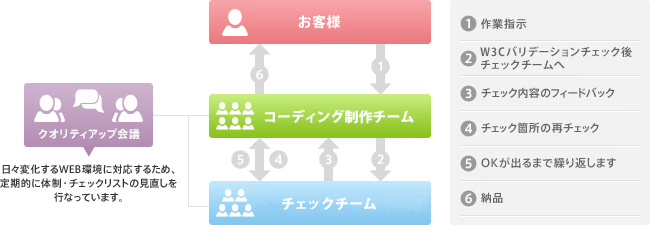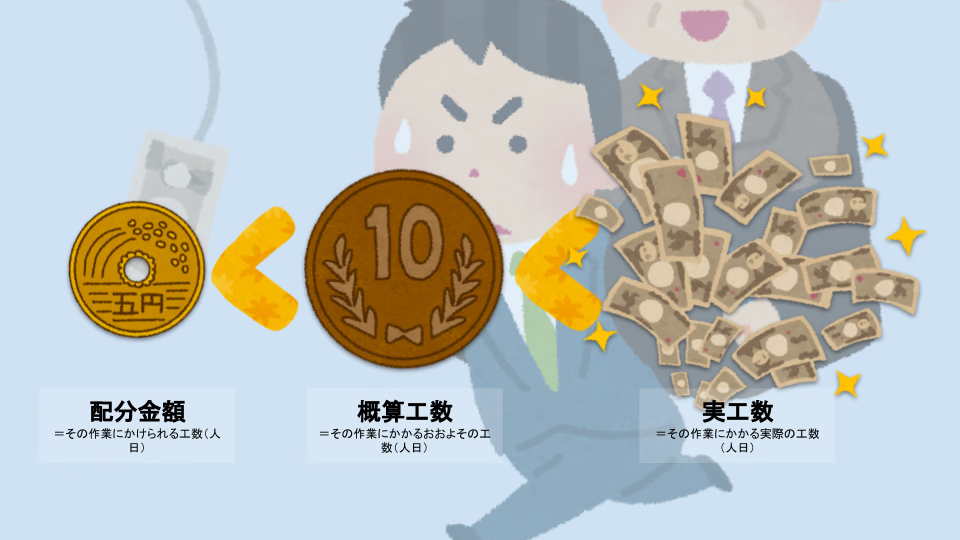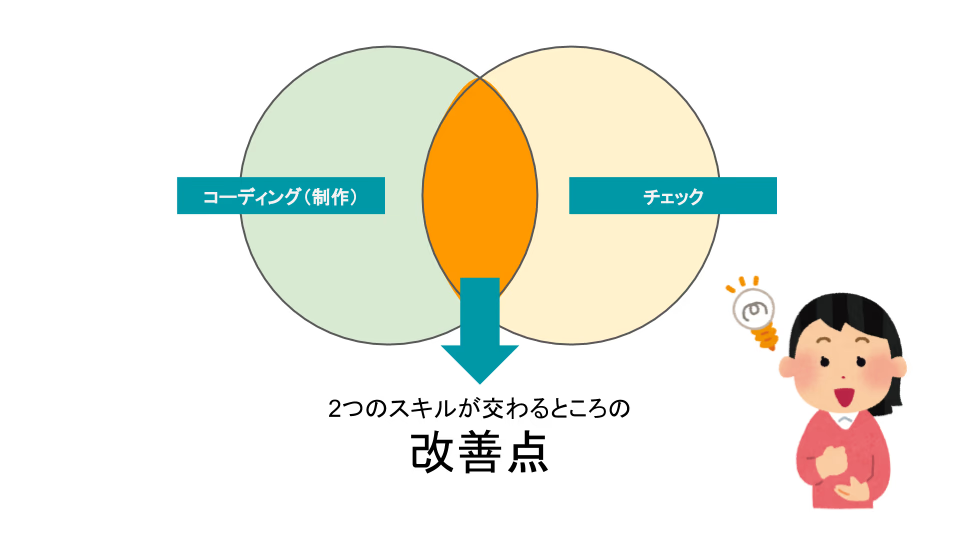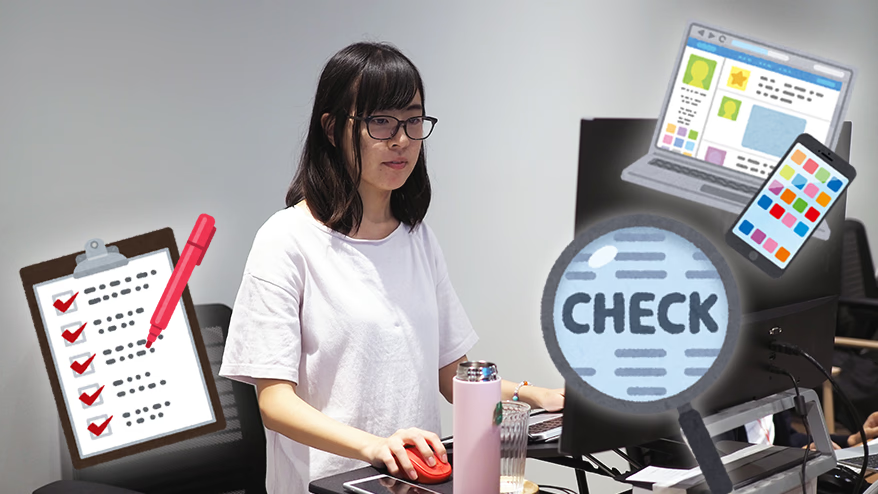何かを作るとき、ついて回るのは「品質」です。
それは保証されるべきもの。そして向上されていくべきものです。けれどそれを目指すときに、誰かや何かが無理をしたり、損をするようなことは避けたいもの。
皆がWin-Winになれるように、ものさすの「QA」作っちゃうもんね。
元代々木の制作ディレクター、タイで新人チェッカーになる
こんにちは、モノサスタイランド(モノタイ)チェッカー・QAの田中です。
私は以前、コーディングファクトリー(CF)のディレクター・コーダーとして4年半ほど日本のモノサスに勤務していました。プロジェクトをご一緒させていただいた方はご存じかもしれません。その節はお世話になりました。
この度「モノタイでチェッカーやりませんか」とお話をいただき、今年2月にモノタイに転籍。はるばるタイにやってきております。
ところでチェッカーって何?モノサスのチェック体制
モノサスのチェック体制をご存じない方は、以下のリンク先をご覧ください。

「納品品質」を実現するチェック体制|コーディング代行ならコーディングファクトリー
モノサスで作られた成果物について、納品水準に達しているかどうかの確認と修正指示、OKの判断を行うのが「チェッカー」の役割です。
チェック業務はもともと、お客様の納品後チェックのご負担を軽減するべく生まれました。
ディレクターやデザイナー・コーダーなど「作る」立場からは一歩引いた「見る」者として、第三者的な立場から成果物の完成度をダブルチェックし、OKが出たもののみ納品される仕組みです。
普段は表に出てこないチェッカーたちですが「制作する人とは別の目と頭」としてあらゆるプロジェクトに関わり、いまではCFだけではなくモノサスで制作するほとんどの成果物に関わっています。
参照:
品質管理部の検証の変化
CODING FACTORY TOPICS Vol.128 2019年6月号
http://coding-factory.com/cftopics/cf128.html
私も元CF部員として制作に携わっていたころ、当然毎回チェックをお願いしていました。
それが今度は、モノタイメンバーをはじめ制作メンバーからチェックを依頼される立場に。
ある程度制作のことはわかるので融通が効く部分もありますが、やはりチェッカーとしては新人です。さらにモノタイではたったひとりのチェッカーということもあって、代々木モノサスの品質管理部のメンバーの経験と知恵、手を借りながら、手探りで進み始めました。
このままじゃ全然稼げない!?
「配分金額<概算工数<実工数」のいびつな現実
今までの自分にとっても遠くない存在であった「チェック」という仕事。どんなことをするのかは知っているつもりでしたが、実際に自分の仕事としてチェック業務を始めてみると…
思っていたより大変だった。
実際にチェックをしてみて感じたこと
①予想より時間がかかる
まずは何よりもこれ。
チェック作業はとにかく時間がかかります。もちろん制作するよりは短い時間ですが、結果的に予想をはるかに超える時間が必要とされました。
また、チェック作業自体にかかる時間もありますが、実装の難しい案件が増えてきている昨今。案件によっても展開される資料は様々で、それを読み解く=チェックの準備をする時間も必要です。また制作スタッフよりも1人当たり多くの案件を担当するため、すべての案件の仕様を把握しておくのは大変難しく、毎回チェック前にチェック要件をまとめた社内資料「チェックシート・サイトマップ」を確認して着手しています。
また、チェック作業の生産性を計るにあたり、どの作業にどれくらいの時間がかかるのかという「概算工数」があります。
しかし、ディレクターやコーダーから示された仕様が守られているか、抜け漏れの無いように丁寧に見ていくには、概算工数だと到底足りないことがあるのです。
つまり「概算工数<実工数」の図式がすごかった。体感では「概算工数<<<<実工数」くらいでした。
②すごく疲れる
そんな風にチェックしていると、やっぱりすごく疲れるんです。
目はもちろんしんどいし肩こりもツライ。ずうーっと集中しているので、だんだん頭も痛くなってきます。
集中力を保つためにこまめに休憩するようにしていますが、そうすると困ってくるのが一日の仕事量です。
デザインからコーディングを起こした1ページにかかる実工数が1hだとして、8時間勤務で8ページが目安になりますが、これは休憩なしでのページ数。適宜休憩をとるようにしていると、残業しないと8ページはチェックできません。
一度休憩なしでどこまでできるか挑戦しましたが、3時間でもうフラフラ。そのことを先輩方に相談すると「続けてやりすぎ。それじゃ品質担保の仕事はできない」と叱られてしまいました。
チェッカーは、第三者の目で納品できるクオリティであることを確認する最後(にとても近い)の砦です。それがしっかりしていなくては、チェッカーがいる意味がありません。
意識をしっかり保つ為にも休養は必要不可欠。勤務中の休憩はきちんと取り、残業も避けたいところとなりました。
思えばCFにいて、毎日スケジュールとタスクに追われていたあの頃。
チェッカーさんはみんなちゃんと休憩も取って定時で帰れていいなー、とか、その時間でもうちょっとたくさんチェック返してほしいなー、なんて思っていました。
ああ、あの頃の自分にチョップしたい。辞書の角をぶつけたい。
それにしても、うーん、こりゃ思ったより大変だな…
制作時代には実感できなかったチェックにまつわるアレコレを身をもって体験した私は、しっかり頭を抱えることになりました。
なぜなら、そこにはもう一つ問題があったからです。
さらなる問題発生。
切っても切れない「お金」の話
会社での仕事について回るのが、個人予算です。
チェッカーの私にもやはり予算はあり、毎月その達成を目指します。
新しい仕事を始める前に、予算について説明を受け、一日あたりどのくらいの仕事量が必要なのかを計算していました。
もちろん初月からの達成はなかなか大変で、多少の無理は必要だと承知していましたが、ここにはそれ以上の「歪み」がありました。
モノサスの場合、案件にかかわった各セクションへの利益配分パーセンテージは決められています。内訳は割愛しますが、仮に50万円の案件があったと仮定して計算すると、配分金額内でかけられる工数に対して、概算工数は約1.7倍(!?)でした。
あくまで配分金額との比較計算なので、お見積りとはまた別なのですが。
そもそも「概算工数」の時点で、配分金額相当の工数の2倍近くになっていたのです。
この概算工数はあくまでチェックの作業のみにかかる工数です。仕様をまとめたり確認をとったりする「ディレクション工数」は含まれていません。
次に気になるのは、実工数が概算工数とニアリーイコールになっているか。
モノサス社内ではチェックするページごとにランクがつけられています。
A:新規ページ。デザインからコーディングを起こしていたり、ページごとに細かいチェックが必要なもの。文言やリンクもデザインファイルやWFをもとにチェックするため、工数がかかる。
B:軽めの新規ページ。パーツ集を使った移行量産案件などがこれに該当する。コーディング上統一されていることが前提のため、Aほど工数がかからない。
C:修正。A・Bのページをチェックして修正があった場合の再チェック。
A・Bのチェックを1巡目、Cを2巡目と呼び、1巡目はコンテンツチェック+指定のブラウザチェックをして、2巡目以降は問題のあった箇所・ブラウザをチェックします。
それぞれのランクに対応する「概算工数」は、Aが0.85h(50分)、BとCが0.25h(15分)程度となっています。
ただ実際に作業してみると、Aのページにかかる時間はだいたい1~1.5h。
また、1ページあたりの長さや、動きのあるJSが組み込まれているなど、要件によっては2h以上かかることも。たった1ページチェックするのに半日かかったこともあります。
これは「軽め」とされているBランクのページでも同じことです。もっとも工数のかからないはずのCでも、1巡目での修正の数によっては概算以上の時間がかかってしまいます。

つまり、現状の配分パーセンテージで毎月の予算を達成するためには、まず膨らみがちな実工数をおしなべて概算工数相当にまで削減し、さらにそれを半分近くまで圧縮しなければ利益が出ないということです。
「配分金額<概算工数<実工数」のいびつな現実から導き出される厳しすぎる現実に、さすがに私も青くなってしまいました。
立ちはだかる「生産性の壁」
チェッカーではない「QA」への探求が始まる!
実際の作業に対して配分される金額が足りないのであれば、それを整理して説明して、お見積もり時にチェック業務分を見合う分計上してもらえるように働きかければいいでしょう。
でも、その前に、自分たちの手元の仕事について、やっておくべきことがあります。
実は昨年までチェック業務は間接部門であり、予算や売上げ等はありませんでした。
それが今年度より直接・間接部門の垣根をなくし、どの部署にも一定の売り上げが付くように体制が変更されたのです。
CFという直接部門に長く所属していた私にとって、与えられた予算に対してどれだけ最小の時間と労力で最大の利益を生むか=生産性の向上は、仕事をする上で追及していく大きなテーマの一つでした。
そしてチェッカーとして働くようになり、チェック業務にも予算と売上げがつくようになった今、同じように生産性を向上する必要が出てきました。
概算工数より時間がかかってしまうのは何故か。こまめに休息をとらなければ仕事にならないほど心身に負担がかかっているのは何故か。
どうしてこんなにいびつな相関図が出来上がってしまっているのか。
結果から原因ををたどるように探っていくうちに、ひとつの考えに行きつきました。
チェック手法の効率化・自動化は勿論必須。
でも、根本的な問題は、現在のワークフローにもあるのではないか?と。
成果物のチェックだけではない
サービス全体の品質保証・管理・向上に関わる「クオリティアシュアランス=QA」
転籍のお話をいただいたとき、聞かされた肩書きは「クオリティアシュアランス=QA」でした。
その時はカッコイイ言い方だなー程度に思っていましたが、ふと「QA」について調べてみると、恥ずかしいことに私が知らなかっただけで、ちゃんと存在している役職でした。
成果物を確認し、他の箇所に影響が出ていないか調べ、修正があればその指示を出す、のはモノサスのチェッカーと同じ。
さらに、結果を分析して、ワークフローやマニュアルの改善をすることが、実はQAとしてとても大事な仕事ということ、そうすることが、ひいては組織全体の提供するサービスの品質向上につながる「品質保証・管理」の仕事なのです。
参照
第48回:コールセンターの品質を昇華させるクオリティ・アシュアランスの役割|CRMソリューション/コールセンター|OKIソフトウェア
https://www.oki-osk.jp/product/crm/column/2017/c48.html
QA(品質保証)の意味とQC(品質管理)の違いとは何なのか。 | landgather
https://landgather.com/qaqc
元制作する側だったから見えてきた「別の目と頭」として、できること
ものさすの「QA」への探求が始まる
もっとこうすれば早くなる。正確性が上がる。ディレクターやコーダーの負担が減りながら、チェッカーの効率があげられる。両者間の連携がスムーズになる。
これまで私はモノサス社内では「制作する側」の人間でした。それが今「見る側」の人間になったことで、2つのスキルの重なる部分から、モノサスのサービス品質向上につながるワークフロー改善のアイデアがいくつも浮かんできたのです!


先日モノタイでの「corder party」にて発表をした時のスライドに使用した図。チェッカーの生産性向上は、ディレクター・コーダーの生産性向上に繋がる(はず)。
これから書いていくのは、別に誰の許可も得ず、自由に、勝手に目指す「ものさすのQAへの道」。
次回は、私がチェッカーとして業務を進めて行く中で見つけた、数々の生産性の向上を妨げる問題を、チェック手法の問題=ミクロ視点とワークフローの問題=マクロ視点をもって考えたいと思います。
